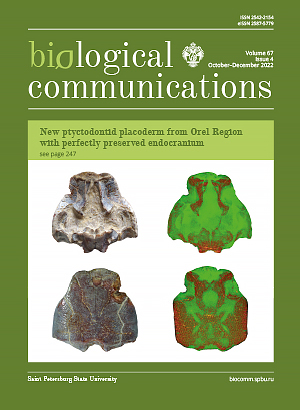Analysis of “historical” DNA of museum samples resolve taxonomic, nomenclature and biogeography issues: case study of true lemmings
DOI:
https://doi.org/10.21638/spbu03.2022.408Abstract
Historical DNA of museum specimens is of paramount importance in elucidation of complex nomenclature issues and a priceless source of material gathered during preceding centuries in hardly accessible today sites. Here we report the results of genotyping type specimens of Lemmus obensis bungei Vinogradov, 1925 from the collection of the Zoological Institute RAS and specimens of lemmings from the upper streams of the Omolon River, identified as L. amurensis from the collection of the Institute of Systematics and Ecology of Animals, Siberian branch of RAS. The genetic profile of the type specimens in the first case was crucial for the nomenclatural solution as these specimens are from the point of the major evolutionary divergence on the Lena River. The results of the study convincingly showed that the lectotype belong to the eastern mitochondrial lineage of L. sibiricus. Therefore, if ever in the further studies it would be conclusively shown that this mitochondrial lineage may become a valid taxon of any rank, then names “novosibiricus”, “ognevi”, “portenkoi” will become younger synonyms of “bungei”. The new obtained sequences of the specimens from the Omolon prove initially wrong assignment and represent L. sibiricus eastern lineage.
Keywords:
historical DNA, collection samples, Lemmus, type specimens, cytochrome b, species identification
Downloads
References
Downloads
Additional Files
Published
How to Cite
License
Articles of Biological Communications are open access distributed under the terms of the License Agreement with Saint Petersburg State University, which permits to the authors unrestricted distribution and self-archiving free of charge.





